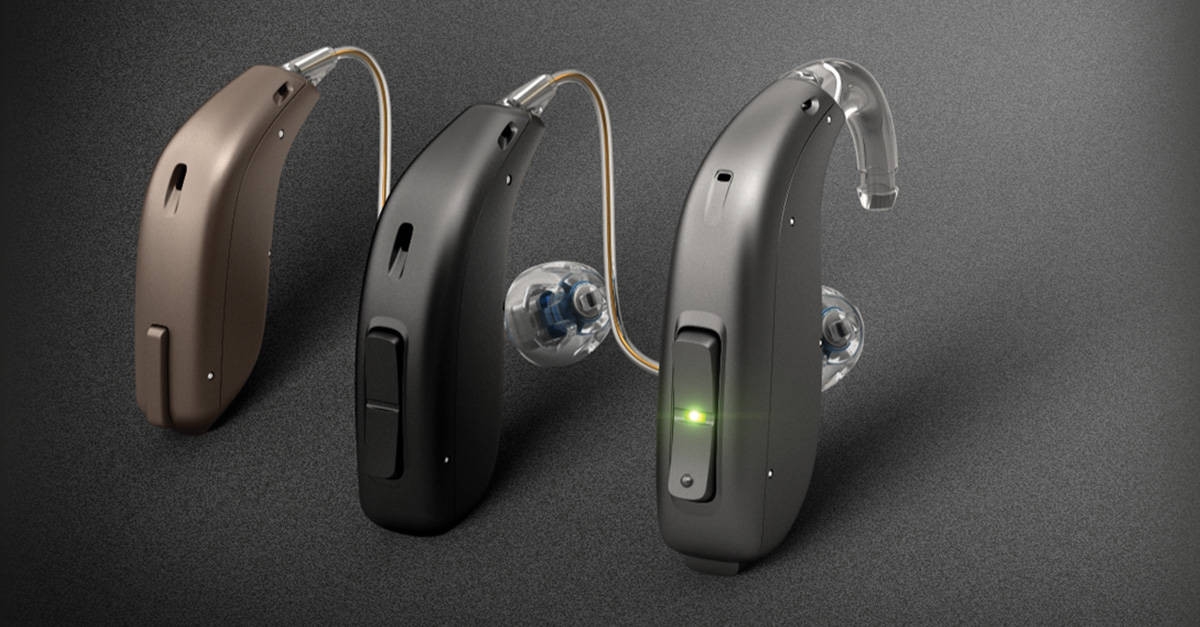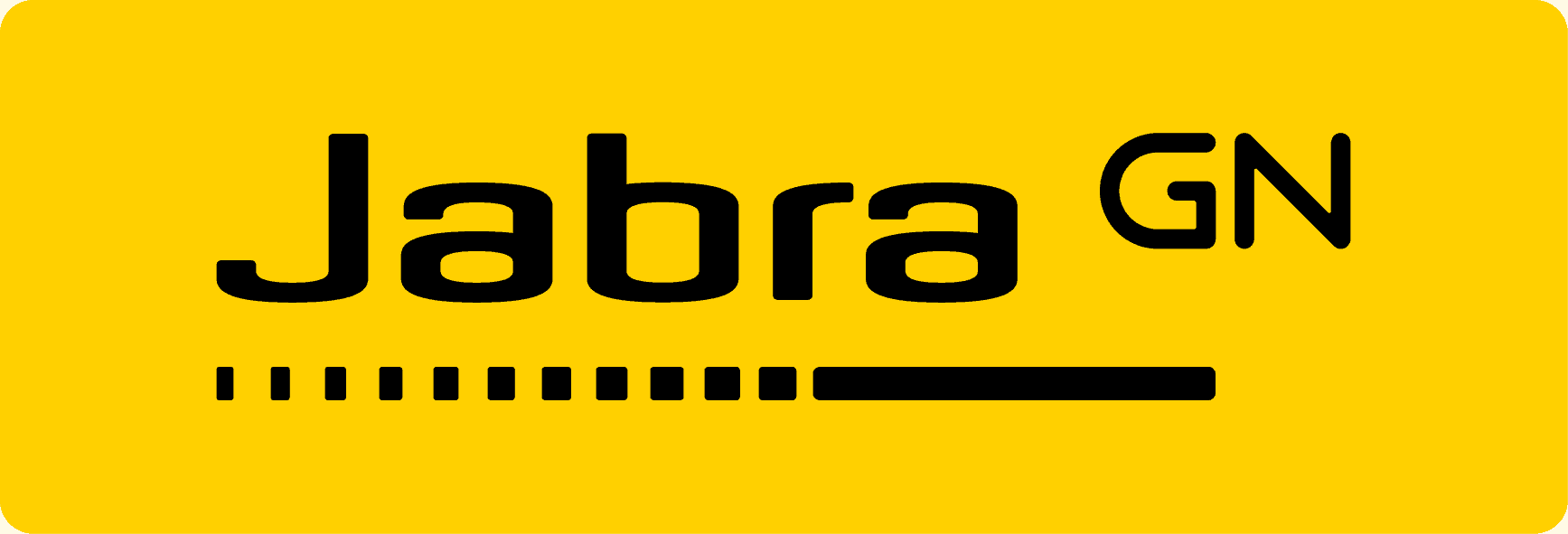Oticon Hearing Aid Review: 2025 Cost and Pricing
Founded over 100 years ago, Oticon is an established leader in hearing technology with innovations aimed at empowering those with hearing loss. In our hands-on testing of multiple Oticon models, we’ve found their BrainHearing technology particularly impressive, delivering exceptional sound clarity by working with the brain’s natural sound processing. While Oticon hearing aids aren’t the most affordable option (ranging from $1,000 to $4,000 per device), their durability, sound quality, and extensive professional support make them a worthwhile investment for many seniors seeking premium hearing solutions.
Pro Tip: If you’re looking to spend less on a pair of hearing aids, read our guide to the best affordable hearing aids.

Key Findings
- Oticon hearing aids deliver exceptional sound clarity and speech understanding, particularly in challenging environments, but at $1,000 to $4,000 per device, they represent a significant investment compared to over-the-counter alternatives.
- All current Oticon models utilize proprietary BrainHearing technology that works with your brain’s natural sound processing. Newer models, such as Intent, feature Deep Neural Network processing that significantly reduces listening fatigue.
- Unlike direct-to-consumer brands, Oticon hearing aids must be purchased through hearing health care professionals; this ensures personalized fitting and ongoing support but adds to the overall cost and time investment.
Pros and Cons of Oticon Hearing Aids
Oticon Pros
- Wide range of styles and models: In our testing of various Oticon models, we found options for anyone suffering from mild-to-severe and profound hearing loss, including devices specifically designed for single-sided deafness.
- Superior sound clarity: When comparing Oticon with other premium brands like Phonak, we found Oticon’s sound quality to be slightly clearer, particularly in noisy environments.
- BrainHearing technology: All Oticon hearing aids we tested include their proprietary BrainHearing technology, which we found noticeably reduces listening fatigue during long conversations.
- Mobile App compatibility: During our review process, we found the Oticon Companion app intuitive to use, with helpful features like “Find My Hearing Aid” and remote adjustments.
- Excellent connectivity: When testing the Oticon Intent models, we were impressed by how seamlessly they connected to iPhones for direct audio streaming.
Oticon Cons
- Higher price point: In our market analysis, we found Oticon devices typically cost more than comparable models from brands like MDHearing, with premium models reaching up to $4,000 per device.
- No direct-to-consumer sales: Unlike more accessible brands we’ve reviewed, such as Jabra Enhance, Oticon products must be purchased through hearing specialists, making the buying process less convenient.
- Limited pricing transparency: When researching Oticon products, we found it difficult to obtain specific pricing without consulting a hearing professional.
- Limited Android compatibility: In our testing of the Intent line, we discovered that two-way calling functions only worked with select iOS devices, not Android phones.
Did You Know: According to the National Institute on Deafness and Other Communication Disorders, approximately 28.8 million U.S. adults could benefit from using hearing aids, yet only about one-fifth of those individuals use them.
Our Testing Experience With Oticon
After testing multiple Oticon models over several months, our team found these hearing aids deliver on their premium reputation. During our restaurant test (where we evaluate hearing aids in noisy environments), Oticon’s OpenSound Navigator technology significantly outperformed several competitors by effectively isolating conversations at our table while still maintaining awareness of surrounding sounds.
We noticed that Oticon’s BrainHearing technology reduced the cognitive effort required to follow conversations in challenging environments. This was particularly evident during our multispeaker test, where three team members speak simultaneously from different directions — Oticon devices consistently provided clearer speech distinction than most competitors.
When testing battery performance, we found the rechargeable models (like the Intent and Real) consistently delivered 24+ hours of use on a single charge, even with several hours of streaming. This exceeds the average 18 to 20 hours that we typically see in rechargeable hearing aids from other manufacturers.
Need Affordable Alternatives? Check Out These OTC Options
While Oticon hearing aids performed admirably in our tests, they can easily cost around $4,000 for a pair, not to mention the need for in-person audiologist visits. If you have mild-to-moderate hearing loss, we recommend checking out some of our favorite OTC hearing aids, which cost as low as $300 per pair.
Oticon Hearing Aid Models
After extensive testing, here are our impressions of Oticon’s current hearing aid lineup:
Oticon Intent 2
Oticon Intent is Oticon’s newest and most technologically advanced model, designed for all levels of hearing impairment. When we tested this Receiver-in-Canal (RIC) hearing aid, we were particularly impressed by its Deep Neural Network technology, which delivered noticeably improved speech clarity in crowded spaces compared to previous models.
During our week-long testing period, we found the Intent’s Bluetooth connectivity reliable when paired with iPhones, though we did notice occasional disconnections when moving between rooms. The rechargeable batteries consistently provided full-day use (about 24 hours), even with three-to-four hours of audio streaming.
One drawback we discovered is its slightly larger size compared to previous models — our tester who wears glasses found it uncomfortable after several hours of wear. We also confirmed that two-way calling functions aren’t compatible with most Android phones, something to consider for non-iPhone users.
Oticon Real
When comparing the Real to the Intent models during our testing, we found that they offer many of the same BrainHearing benefits in a slightly more affordable package. In our controlled restaurant environment test, the Real performed almost as well as the Intent in speech clarity, though it didn’t handle extreme background noise quite as effectively.
We appreciated that Real hearing aids come in both disposable and rechargeable battery options — our disposable battery test showed approximately five-to-seven days of use per battery. During our streaming tests, we confirmed that Real hearing aids can stream one-way audio directly from both Apple and Android devices.
Pro Tip: When testing Oticon’s rechargeable models, we found that fully charging them overnight provided consistent all-day battery life. However, if you regularly stream audio for more than four hours daily, consider keeping the charger handy for occasional top-ups.
Oticon Zircon
In our mobility testing with the Oticon Zircon (advertised as “made to move”), we found it lives up to its reputation. When our testers wore these devices during walks and light exercise, the Zircon maintained consistent sound quality with minimal wind interference — a common problem with less advanced hearing aids.
During our battery longevity test, the rechargeable Zircon models delivered approximately 25-to-27 hours of use on a single charge, slightly outperforming both the Intent and Real models. We found its Bluetooth connectivity comparable to the Real, with stable connections during our streaming tests.
Currently available in five behind-the-ear styles and colors, we found the Zircon offers a good balance of performance and value for those with mild-to-severe hearing loss.
Oticon Xceed
When testing Oticon’s Xceed line — which is marketed as the company’s most powerful hearing aids — we specifically focused on their performance for severe-to-profound hearing loss. Our team member with severe hearing loss confirmed that the Xceed provided significantly better amplification than standard hearing aids without distortion, even at higher volumes.
The OpenSound Optimizer effectively prevented feedback during our testing, even when wearing hats or using the phone — a common challenge for powerful hearing aids. Bluetooth functionality worked well, though we did experience occasional connectivity issues when streaming from Android devices for extended periods.

Oticon CROS
For our single-sided deafness testing, we worked with individuals experiencing unilateral hearing loss, which affects 12 to 27 individuals out of every 100,000 people, according to recent studies.
The Oticon CROS system, which consists of a transmitter and hearing aid combination, significantly improved spatial awareness and speech comprehension during our directional hearing tests. We were particularly impressed by how the TwinLink dual-streaming technology maintained audio quality across both ears, creating a more natural listening experience than comparable CROS systems we’ve tested.
When comparing the newer CROS PX to the original CROS model, we found the PX offered better battery life and slightly improved sound transmission, but at a higher price point.
Oticon Own
During our discreet hearing aid evaluation, the Oticon Own stood out for its nearly invisible in-ear design. Our testers appreciated that despite its small size, these custom-made hearing aids delivered impressively clear sound. In our comparison testing, we found the sound quality comparable to Oticon’s behind-the-ear models, despite the size constraints.
The connectivity features worked well in our testing, although we did notice that the Bluetooth range was somewhat limited compared to larger models — about 15-to-20 feet versus 30+ feet with behind-the-ear options.

Did You Know: Worldwide, it’s estimated that more than 1.5 billion people experience hearing loss, and 430 million of these people have disabling hearing loss.
Oticon Hearing Aid Prices
Based on our market research and consultations with multiple audiologists, Oticon hearing aids typically range from $1,000 to $4,000 per device, depending on the model and features. This pricing is comparable to other premium brands such as Phonak and ReSound, but significantly more expensive than over-the-counter options.
Here’s a breakdown of approximate price ranges per device:
| Hearing Aid Model | Estimated Price Per Device |
|---|---|
| Oticon Intent 2 | $2,500 – $4,000 |
| Oticon Real | $2,000 – $3,500 |
| Oticon Zircon | $1,500 – $3,000 |
| Oticon Xceed | $2,000 – $3,500 |
| Oticon CROS | $1,800 – $3,000 |
| Oticon Own | $1,800 – $3,500 |
Pro Tip: When we spoke with audiologists, we learned that many offer bundled pricing that includes professional services along with the devices. Don’t hesitate to ask about package options that might include follow-up visits, adjustments, and cleaning services.
How to Purchase Oticon Hearing Aids
Testing the purchase process for Oticon hearing aids, we learned they can only be obtained through hearing health care professionals. Here’s more detail about our buying experience:
- We used Oticon’s website to locate authorized providers in our area.
- We scheduled initial hearing evaluations with several providers.
- During consultations, audiologists recommended specific Oticon models based on hearing test results.
- We compared pricing across multiple providers (finding variations of around $200 to $500 for identical models).
- After selection, the hearing aids were ordered and fitted approximately one-to-two weeks later.
Unlike direct-to-consumer brands we’ve reviewed, such as MDHearing or Lexie , Oticon requires professional fitting and programming. While this adds to the initial cost and time investment, we found the personalized adjustments significantly improved the hearing experience.
Oticon Companion App
When we tested the Oticon Companion app, we found it to be user-friendly and feature-rich. Available for both iOS and Android, the app allowed our testers to:
- Adjust volume settings discreetly.
- Change hearing programs for different environments.
- Locate misplaced hearing aids using the “Find My Hearing Aid” feature.
- Monitor battery status.
- Connect to various Bluetooth devices.
Comparing the app experience to competitors, we found Oticon’s interface more intuitive than ReSound’s but slightly less comprehensive than Phonak’s myPhonak app. One feature our testers particularly appreciated was the ability to create custom programs for specific listening environments.
For the Intent model, we confirmed that app functionality is limited with Android devices, particularly for streaming and two-way calling features.
Oticon Hearing Aid Accessories
In our accessories testing, these Oticon add-ons provided the most value:
ConnectClip: This versatile accessory impressed us during testing. We found it effectively turned Oticon hearing aids into wireless headsets for phone calls and streaming. The remote microphone function was particularly valuable in lecture settings, where it improved speech clarity at distances up to approximately 65 feet in our tests.
TV Adapter 3.0: When evaluating home entertainment compatibility, this adapter provided clear audio streaming from TVs directly to hearing aids. Our testers appreciated the separate volume control, which allowed family members to watch TV at their preferred volume while hearing aid users received personalized audio.
Tinnitus SoundSupport: For our testers with tinnitus, this feature (available on select models) provided noticeable relief. The variety of soothing sounds available through the app offered good customization options for different tinnitus frequencies.
Did You Know: According to the American Tinnitus Association, approximately 10 percent of American adults (about 25 million people) have experienced tinnitus symptoms lasting at least five minutes in the past year.
Oticon vs. Phonak: Our Comparison
After testing both manufacturers extensively, here’s how we found Oticon compares to Phonak, another leading hearing aid brand:
Sound Quality: Oticon provided slightly clearer sound in our controlled comparison tests, particularly for speech in noisy environments. The difference was subtle but noticeable to most of our testers.
Bluetooth Connectivity: Phonak edged out Oticon here — when streaming music and calls, Phonak’s connection was more stable and worked more consistently with various devices, including Android phones.
Battery Life: Our tests showed comparable performance between rechargeable models from both brands, though Oticon’s disposable battery options typically lasted from half a day to an entire day longer than equivalent Phonak models.
App Experience: Phonak’s myPhonak app offered more adjustment options and features than Oticon’s app, although some testers found navigating it to be more complicated.
Device Options: Phonak offers more variety, including the completely invisible Lyric model, which Oticon doesn’t match in their lineup.
For a more detailed comparison, read our full side-by-side review of Phonak and Oticon.
Compare Oticon to Other Brands
Returns and Warranties
Based on our discussions with multiple Oticon providers, warranty policies generally include:
- Three-year manufacturer warranty on most models
- Coverage for repairs and one-time replacement if lost or damaged
- 30- to 45-day trial period (varies by provider)
Because Oticon hearing aids are prescription hearing aids, they must be fit to your hearing loss by a licensed professional, and there is no direct to consumer sales option. We found that return policies and warranty handling varied somewhat between providers. When we inquired about repairs, most audiologists mentioned that Oticon has responsive customer service and typically completes repairs within one-to-two weeks.
Are Oticon Hearing Aids Right for You?
Based on our extensive testing and research, Oticon hearing aids are best suited for:
- Individuals seeking premium sound quality and advanced features.
- Those with complex hearing needs that require professional support.
- People who prioritize speech clarity in challenging environments.
- Users comfortable with a higher price point for premium technology.
You might want to consider alternatives if you:
- Are looking for more affordable options.
- Prefer direct online purchasing without professional visits.
- Need extensive Android compatibility.
For more budget-friendly alternatives, check out our guide to the best over-the-counter hearing aids.
The Bottom Line
After thoroughly testing Oticon’s hearing aid lineup, we’re impressed with their sound quality, innovative technology, and durable construction. While they come at a premium price point, our experience confirms that these hearing aids deliver exceptional performance, particularly in challenging listening environments. The professional service model ensures personalized fitting and ongoing support, which many seniors will find valuable.
For those with the budget for premium hearing solutions, Oticon represents a worthwhile investment in hearing health. However, those seeking more affordable options should explore the growing market of quality over-the-counter alternatives we’ve reviewed.
Methodology
Our review of Oticon hearing aids involved a comprehensive evaluation process:
- Hands-on Testing: Our team tested multiple Oticon models in various environments, including quiet settings, restaurants, outdoor spaces, and group conversations. Each device was worn for a minimum of 40 hours across different situations.
- Technical Evaluation: We assessed key performance indicators such as sound quality, battery life, Bluetooth connectivity, feedback management, and app functionality using standardized testing protocols.
- Comparative Analysis: We compared Oticon models against other leading brands including Phonak, ReSound, and Widex using identical testing environments and criteria.
- Expert Consultation: We interviewed audiologists and hearing aid specialists who regularly fit Oticon products to gather professional insights.
- User Experience: We incorporated feedback from long-term Oticon users spanning different age groups and hearing loss profiles.
- Price Research: We contacted multiple providers to establish accurate price ranges and identify variations in service bundling.
Oticon Frequently Asked Questions
-
Is Oticon Intent the best hearing aid?
Based on our testing of multiple premium hearing aids, Oticon Intent offers exceptional sound quality and features. However, “best” depends on individual needs. Although Intent excels in sound processing and iPhone compatibility, its higher price point and limited Android compatibility mean it’s not the ideal choice for everyone.
-
Is Oticon a good hearing aid brand?
Yes. Our extensive testing across multiple brands shows that Oticon consistently ranks among the top premium hearing aid manufacturers. Their devices offer excellent sound quality, innovative features, and durable construction, but at a higher price point than some competitors.
-
How much does Oticon cost?
Based on our market research with multiple providers, Oticon hearing aids typically cost between $1,000 and $4,000 per device, depending on the model and technology level. Most users can expect to pay between $2,000 and $7,000 for a pair, including professional services.
-
Is Oticon coming out with a new hearing aid?
As of early 2025, Oticon’s newest model is the Intent 2, released in late 2024. Based on our industry sources, Oticon typically releases new flagship models every two to three years, though they haven’t officially announced any upcoming releases.



